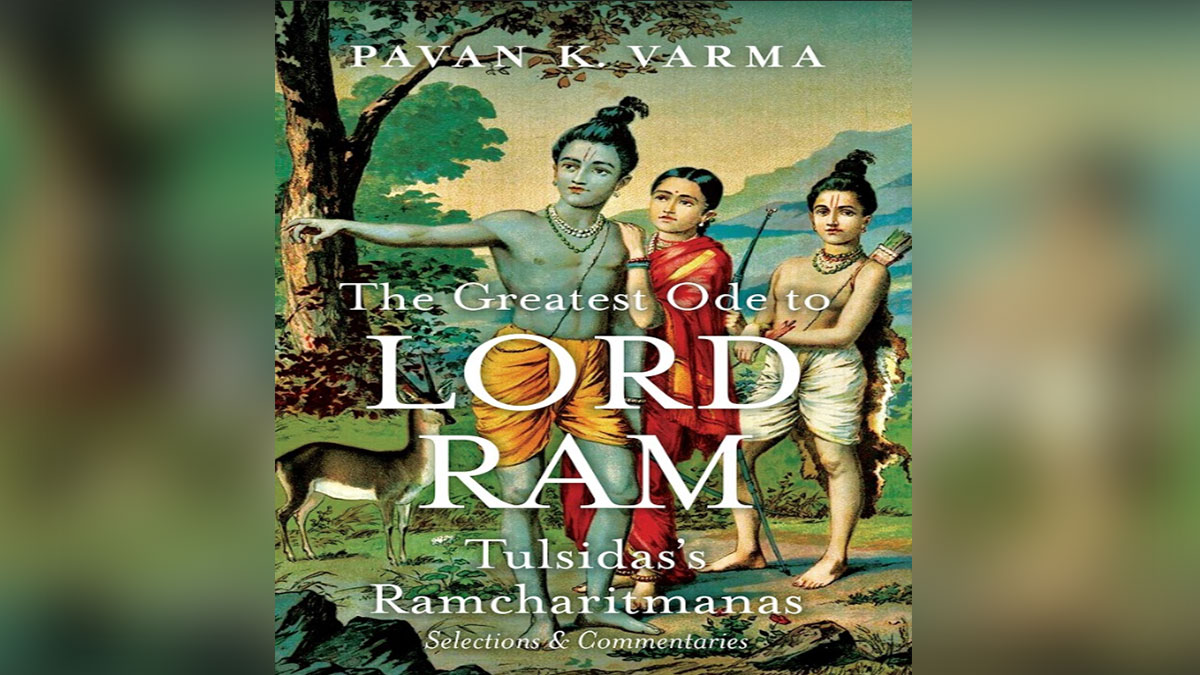


There are several versions of the Ramayana story. Despite some regional variations, the Mahabharata story is essentially one. For Ramayana, there are Sanskrit and non-Sanskrit versions. For example, in Sanskrit, we have (1) Valmiki Ramayana; (2) Adhyatma Ramayana; (3) Yogavasishtha Ramayana; (4) Rama’s story in Raghuvamsham; and (5) Ramayana story in Mahabharata.
Perceptions about Rama and Ramayana, and faith in Rama, aren’t primarily driven by Sanskrit versions, but often by non-Sanskrit renderings, vernacular languages so to speak. Across a large swathe of India, that influence was due to Tulsidas (about whose life we only know the bare bones) and Ramcharitmanas. Ramleela performances are based more on Ramcharitmanas than Valmiki Ramayana. To appreciate Ramcharitmanas, with its building block of bhakti, a reading of Adhyatma Ramayana is preferable to Valmiki Ramayana. Tulsidas wrote in Awadhi (we can accept that as a dialect of Hindi) and deSanskritised and popularised the Rama story. (I will continue to use Rama, though for Ramcharitmanas alone, Ram is more appropriate.)
There seems to be a resurgence of interest in Ramcharitmanas. That’s an incorrect statement. There has always been interest in Ramcharitmanas; it is just that more is being written about Ramcharitmanas in English. Even in English, Frederick Growse translated Ramcharitmanas as early as 1883. In this age, technology helps. Most people will probably have heard of the Gita Supersite. Other than various Gita texts, it has the entire Ramcharitmanas online, in Awadhi, without a translation. I think a better statement is that a new generation of authors and translators is translating and interpreting Ramcharitmanas for a new generation of readers. I can think of four examples: (1) Gita Press translation of Ramcharitmanas in English (2004); (2) An extensive verse by verse translation by Rohini Chowdhury (2019); (3) Arun Tiwari’s interpretation (2019); and (4) this latest one by Pavan Varma (2020). These aren’t substitutes for one another. They add to the corpus, in their own individual ways.
Ramcharitmanas is poetry. If one wishes to understand nuances of poetry, differences between chaupai and doha, and is academically inclined, Rohini is best. Every reference is chased down, as a researcher would. However, Rohini only has the English translation, in verse. The original Awadhi is missing. If one is interested in a deeply reflective and introspective modern interpretation, with both the Awadhi and an English translation, cross-referencing and placing Ramcharimanas against the backdrop of Valmiki Ramayana and Adhyatma Ramayana, Tiwari should be the pick.
An impatient generation lacks both time and inclination. Hence, both Rohini and Arun might be perceived to be heavy reading. To appreciate Tiwari, one has to be ready within, from inside. To appreciate Rohini, one has to be a bit of a scholar. That’s where Pavan Varma scores, without being superficial. As the sub-title makes clear, this isn’t the entire Ramcharitmanas. It has selections, in Awadhi (Devanagari script), Roman (for those uncomfortable with Devanagari) and an English translation.
“The sincere attempt of my book is to bring selections of Tulsidas’s great ode to Ram to the largest number of readers in a readable, accessible and enjoyable form… Not everybody may be able to — in spite of their best intentions — read it from beginning to end, or to comprehend the full meaning of the stanzas. Yet, it is too great a work of literary and spiritual value, not to be read at all. The attempt, therefore, is to present a briefer version of the epic, with carefully chosen selections which reflect the best examples — from my point of view — of the greatness of Tulsi’s writing, and the inspiring profile of Lord Ram… Along with the selection, translations in both Hindi and English are provided. These have been taken from the Gita Press, which stand out for their fidelity and linguistic quality compared with other such publications.” (Personally, I feel uncomfortable with Goswami Tulsidas being referred to as “Tulsi”, though Rohini also does that. Nor do I necessarily agree that Gita Press translations are the best.)
“The conduct of holy men is noble as the career of the cotton plant, the fruit whereof is tasteless, white and fibrous (even as the doings of saints yield results which are free from attachment, stainless and full of goodness.) Even by suffering hardships (in the form of ginning, spinning and weaving) the cotton covers others’ faults and has thereby earned in the world renown which is worthy of adoration.” This is Gita Press and Pavan Varma. “The deeds of the pious are like the fruit of the cotton plant, The product of which is dry, without blemish, and with manifold uses, Which suffers hardship, but allows itself to be spun and woven and pierced by needles to cover the faults of others, And because of which it has earned in this world renown that is worthy of being worshipped.” This is Rohini Chowdhury. “A saintly person, tasteless, stainless/Indifferent and yet useful, full of goodness/A blossoming cotton plant! Suffering hardship — ginning, spinning, weaving/To become cloth to cover; the nakedness of others/Thus valued and adored!” This is Arun Tiwari. You take your pick.
In a sense, Pavan Varma isn’t quite the author of this volume. He is more like a curator and a curator does perform a very useful function. In addition, he has given a brief introduction about Goswami Tulsidas and Ramcharitmanas and there are comments by Pavan Varma at the end of each chapter.
Every book has a target audience. Without being explicitly stated, this volume is presumably targeted at the younger reader, more comfortable with English than the Devanagari script and perhaps, there is a Western audience as an intended target too. For such groups, this is a useful introduction to Ramcharitmanas. This is an appetiser, not the main course.
The book, ‘The Greatest Ode to Lord Ram: Tulsidas’s Ramcharitmanas’, is written by Pavan K. Varma (Westland, Rs 699).